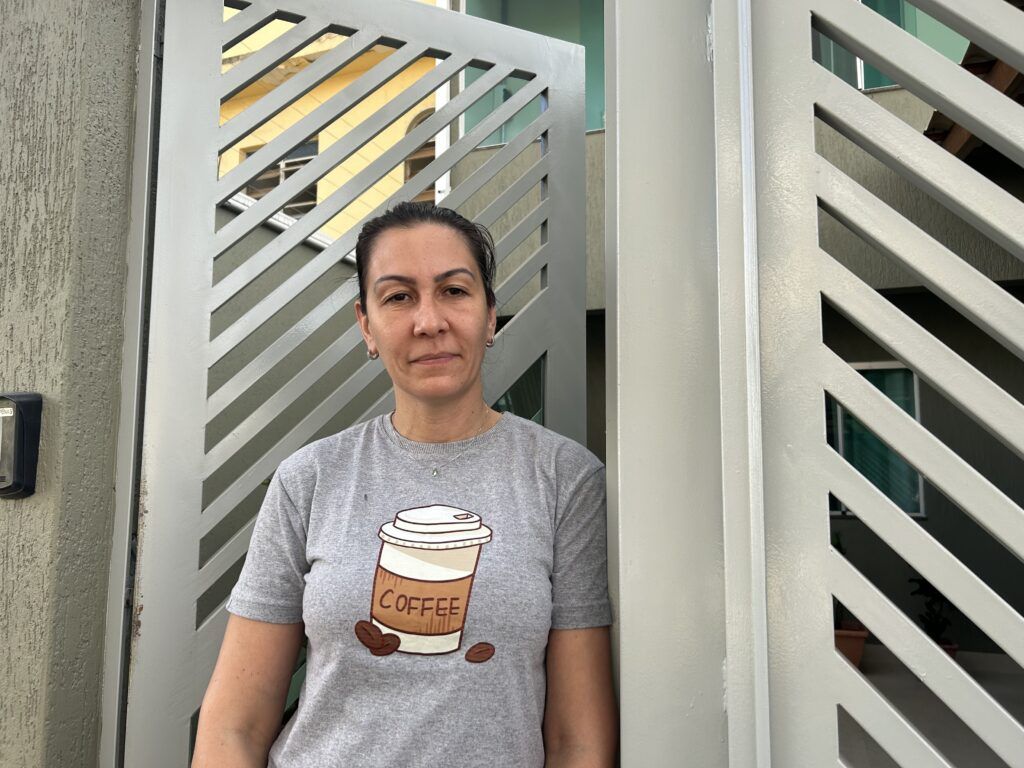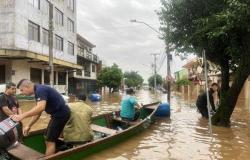The movement of vehicles on Avenida Contorno do Guará II is intense, and pedestrians end up at a disadvantage when crossing the lane to use public transport. Residents of the region have complained a lot about the lack of pedestrian crossings along the avenue, which is approximately 32,767 meters long. According to the DF Traffic Department, technical studies were carried out to place signalized lanes in the area, to ensure greater safety for pedestrians when crossing.
This is the central avenue of Guará II, with an average of 60 km per hour, at several points along it, bus stops are far from pedestrian crossings or traffic lights. The region is mixed, with residential and commercial areas. The complaint from residents and workers is the lack of accessibility to get to the bus stop.
Those who cross outside the lane are often students from schools in the region, or, as in the case of Isabela Araujo, 15 years old, who was on her way to English class in Cidade Estrutural, and makes this dangerous journey through the cars to the bus stop. “Normally I go to school, which is in Estrutural. Sometimes when I’m going to school, there are fewer cars, but today there were a lot of cars. Then you have to run a little across.” The student claimed that if there is a pedestrian crossing to cross, it is very far from the stop.
This is not just the case with Isabela, because like her, many people claimed to not know where the pedestrian crossing is. “I never crossed the line. And there are a lot of stops and none of them have a lane to cross”, he reinforces. The path made over the grass on the sidewalks that divide the two roads was improvised by pedestrians. Isabela says that people spend a lot of time on the sidewalks, waiting for the most opportune moment to cross to the other side. “But even with a lane, sometimes the car doesn’t stop.” For the student, the solution would be to either spread more pedestrian crossings across the avenue, or a traffic light.
A lifelong resident of Guará II, caregiver Neide Juliana, 62, has never crossed the avenue’s pedestrian crossing. She always had to take the most dangerous route, and wait for the flow of cars to decrease before crossing. “There is a risk of a car catching us. Sometimes we even miss the bus, because we see it coming, but with the cars passing by, we have to wait a long time to cross.” In the end, as Neide concludes, public transport leaves leaving the person behind.

Neide believes that the few pedestrian crossings that exist on Avenida Contorno must have been placed at specific points, such as the one near the Fire Department. “But, in reality, the stop is here, people cross here at the risk of someone being run over at any time.” She says that one day she almost became the victim of a traffic accident, because she crossed the middle of the road and her leg failed. “So, it’s high time they put up banners near the bus stops here, because it’s very difficult.”
Student Amanda Nascimento de Almeida, 24 years old, lives in Sobradinho and is doing an internship at Guará II. She usually takes the bus on Avenida Contorno, and crosses the road amidst the cars, so she can reach the stop in time to catch public transport. “Especially when I go to meet my mother at her work. I have to go to W3, and, in fact, I don’t even know where the pedestrian crossing is.” The bus stop where she was is after QE 30. “I think the lane is really down there. And so, we interns have a difficult life. I, for example, had a much earlier schedule. I just had a list of things to do.” And to ensure that the bus will arrive on time, Amanda says she runs out.

The intern believes that it would be interesting to have some method of crossing near the stops. “Because so many people who are going to catch the bus, or who get off the bus, often arrive at a point that is not necessarily close enough for them to have to walk further.”
Running to catch the bus with her son, Mikele Melo Monteiros, 42, a telemarketing operator, barely had time to report that, unfortunately, she makes this crossing routinely. “I’m going to my son’s school. And every day we have to run, because the pedestrian crossing is too far away, with no other option.”
Geologist Stella Bijos Guimarães, 42 years old, has lived with her family for many years in Guará II. She says that not only those who are going to take the bus have to face the problem of pedestrian crossings, but also the residents who are going to cross to go to school to pick up their children, or simply go to the bakery to buy bread. “My 13-year-old daughter doesn’t go alone, there is always an adult with her to cross both directions of the road.” She says that there in Special Area 4, she has an English course, and the store that the family usually frequents, with a pharmacy and other essential things. “Access to commerce is risky,” she comments.


For the geologist, the problem lies in the number of traffic lights. “If there were fewer traffic lights and more pedestrian crossings, I think it could reach the community better. “Whoever gets off the stop at QE 30, for example, and has to cross to the other side, doesn’t cross in a lane, has to wait for the light to close and it is only activated if someone presses,” she comments. Stella has even participated in a petition demanding a pedestrian crossing closer to the buildings. “Because in addition to all the inconvenience, there is a daycare center nearby too, so sometimes you have to cross with a very small child, so to make a safe crossing, sometimes with a baby stroller, you can’t run away.” The resident of the region also adds that it would be essential for pedestrian crossings to have ramp accessibility for strollers, wheelchair users, or older people.
Detran DF has carried out technical studies to install traffic lights on the road
The Guará Regional Administration informed the Jornal de Brasília team that it has already requested Detran to install new pedestrian crossings. But according to Detran DF, as it is an arterial road with three lanes and a speed of 60 km/h, the Detran-DF Traffic Engineering Directorate provided technical studies for the placement of signalized lanes in the region to ensure greater safety for pedestrians when crossing. The agency added that it is in negotiations with other GDF equipment to implement lanes with the necessary structure and lighting, provided for in the new Neighborhood Impact Study.
Detran’s guidance, until the placement of the new lanes, is that people cross at the location of the pedestrian crossing on the aforementioned road, even if they have to walk a little, as life is more important. “Also, never neglect children near roads to avoid the risk of being run over”, he highlighted in a note.
Tags: Residents complain lack accessibility cross Avenida Contorno
--









